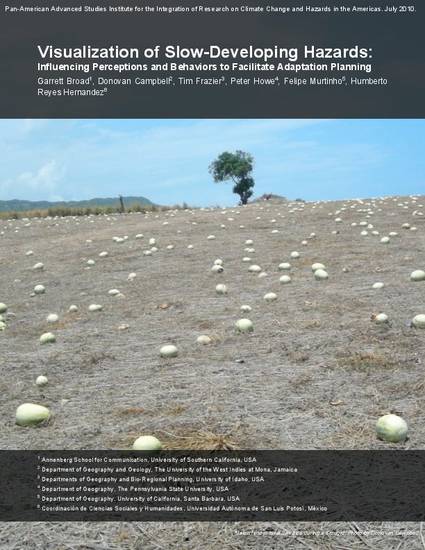
Book
Visualization of Slow-Developing Hazards: Influencing Perceptions and Behaviors to Facilitate Adaptation Planning
(2010)
Abstract
Many of major global environmental problems are chronic rather than acute. Climate change, food insecurity, and water scarcity are prime examples. While science is advancing rapidly at being able to describe, model, and predict these phenomena, the communication of scientific findings to people ‘on the ground’ can be limited by the availability of tools to depict the full depth and breadth of available data. At the same time, people facing hazards can be limited in their ability to communicate their depth of knowledge to researchers and policymakers by differences in organizational knowledge and access to technology, among other concerns.
In this white paper, we discuss both the importance and difficulty of visualizing slow- developing hazards as a way to influence the perceptions of people in vulnerable communities and motivate action to mitigate and adapt to the hazards. We define visualization broadly, to encompass multiple modes and audiences in place-specific situations.
Disciplines
Publication Date
2010
Publisher
Pan-American Advanced Studies Institute for the Integration of Research on Climate Change and Hazards in the Americas
Citation Information
Peter D Howe. Visualization of Slow-Developing Hazards: Influencing Perceptions and Behaviors to Facilitate Adaptation Planning. (2010) Available at: http://works.bepress.com/peter_howe/51/
